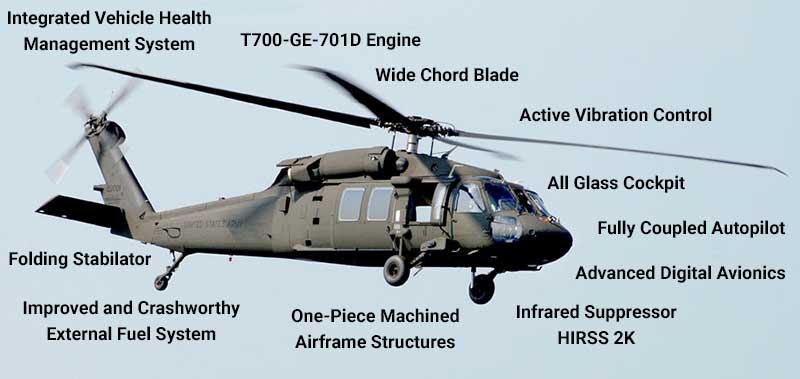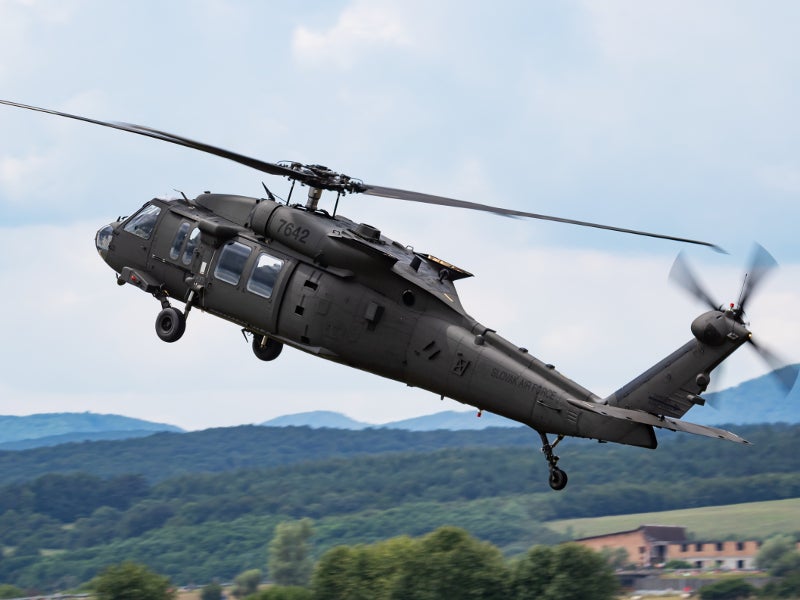Taking Full Advantage Of Safety: Vital Maintenance Tips for Your UH 60 Helicopter
Taking Full Advantage Of Safety: Vital Maintenance Tips for Your UH 60 Helicopter
Blog Article
Comprehending the Mechanics and Engineering Behind Uh 60 Helicopters
The UH-60 helicopter, commonly referred to as the Black Hawk, stands as a peak of contemporary rotorcraft technology, embodying a blend of robust engineering and intricate auto mechanics. From its inception to its present versions, the advancement of this airplane showcases a fusion of advancement and practicality. As we peel off back the layers of the UH-60's design, a globe of elaborate systems and thorough design comes to light. Understanding the mechanics and design behind this functional airplane unveils a world where precision meets power, and where each element plays a critical role in achieving trip.
History of UH-60 Helicopters
The background of UH-60 helicopters traces back to the late 1970s when the USA Army sought a advanced and flexible utility helicopter to change its aging fleet. In feedback to this requirement, the Sikorsky Aircraft Company established the UH-60 Black Hawk helicopter. Introduced in 1979, the UH-60 quickly came to be a staple in army operations because of its remarkable abilities.
The UH-60 was developed to master a selection of objectives, consisting of troop transport, clinical emptying, electronic war, and special operations. Its ability to adjust to different duties made it an important possession to the U.S. uh 60. Military and other army forces all over the world
Over the years, the UH-60 system has undergone a number of upgrades and variations to enhance its efficiency and equal advancing mission needs. These helicopters have seen comprehensive service in problems such as the Gulf War, Afghanistan, and Iraq, showcasing their integrity and versatility in varied operational settings. The UH-60's rich background is a testament to its long-lasting heritage as a leading utility helicopter.

Engine and Power Solutions
Using advanced propulsion innovation, UH-60 helicopters are geared up with innovative engine and power systems to make certain optimum efficiency and dependability in a series of functional scenarios. The UH-60, generally called the Black Hawk, is powered by two General Electric T700-GE-701D engines, each efficient in supplying up to 1,940 shaft horsepower. These turboshaft engines provide the essential thrust for the helicopter to perform its goals successfully, including army transportation, medical emptying, and combat assistance.

Rotor System and Aerodynamics
Exactly how do the rotor system and the rules of aerodynamics of UH-60 helicopters add to their functional performance and trip abilities? The rotor system of the UH-60 helicopter plays a vital function in offering lift and propulsion.
Aerodynamics also play a key duty in the efficiency of UH-60 helicopters. The streamlined body and blades blade design decrease drag, allowing the helicopter to attain higher rates and much better fuel performance. The wind resistant style of the UH-60 also adds to its capability to run in varied environmental problems, including high altitudes and warm temperatures.
Avionics and Trip Control Solution

In its intricate coordination with the blades system and aerodynamics of UH-60 helicopters, the avionics and trip control systems develop an essential network go to website of modern technologies shaping the airplane's operational capacities. Avionics encompass the electronic systems made use of for communication, navigating, and monitoring different airplane functions. In the UH-60, these systems consist of electronic screens, interaction radios, general practitioner navigating, weather condition radar, and auto-pilot systems. These avionics systems provide critical information to the pilots, boosting situational understanding and making certain efficient and risk-free operation of the helicopter.
The flight control systems of the UH-60 are accountable for converting the pilot's inputs right into the ideal modifications to the blades system, ensuring steady flight and ability to move. These systems consist of hydraulic actuators, servos, and computers that interact to manage the major and tail rotors, along with other flight control surface areas. By exactly managing the helicopter's trip characteristics, these systems enable pilots to carry out a broad array of missions, from transport and search-and-rescue to battle operations, with accuracy and self-confidence.
Role and Applications in Aeronautics
The role and applications of avionics and flight control systems in aeronautics are integral to making certain the secure and reliable procedure of airplane, consisting of UH-60 helicopters. Avionics systems in UH-60 helicopters include a variety of electronic systems that aid in navigation, interaction, monitoring, and regulating different airplane features. These systems consist of digital screens, auto-pilot systems, communication radios, general practitioner navigation devices, and weather radar. Trip control systems play a critical role in navigating the helicopter airborne, preserving security, and ensuring accurate movements. The fly-by-wire modern technology used in contemporary UH-60 helicopters equates pilot inputs into digital signals, which are site here after that interpreted by the flight control computers to change the aircraft's control surface areas. Furthermore, these systems integrate safety features such as autopilot settings, terrain understanding warning systems, and stability enhancement systems to improve the general security and functional abilities of the UH-60 helicopters in numerous objectives, including troop transportation, medical evacuation, search and rescue, and airborne firefighting.
Verdict
In conclusion, the UH-60 helicopter is a functional airplane with a rich history and progressed engineering. Its engine and power systems, blades system, the rules of aerodynamics, avionics, and flight control systems all function together to make it a reliable and dependable device.
In its intricate sychronisation with the blades system and the rules of aerodynamics of UH-60 helicopters, the avionics and trip control systems create a vital network of innovations shaping the airplane's functional capacities.The trip control systems of the UH-60 are responsible for translating the pilot's inputs into the ideal adjustments to the rotor system, guaranteeing steady flight and ability to move. Avionics systems in UH-60 helicopters encompass an array of digital systems that aid in navigation, interaction, tracking, and managing different aircraft features. In addition, these systems integrate safety functions such as autopilot modes, surface understanding warning systems, and security augmentation systems to improve the overall safety click here for info and security and operational capabilities of the UH-60 helicopters in numerous objectives, consisting of army transport, clinical emptying, search and rescue, and aerial firefighting.
Its engine and power systems, blades system, aerodynamics, avionics, and trip control systems all work with each other to make it a trustworthy and efficient maker.
Report this page